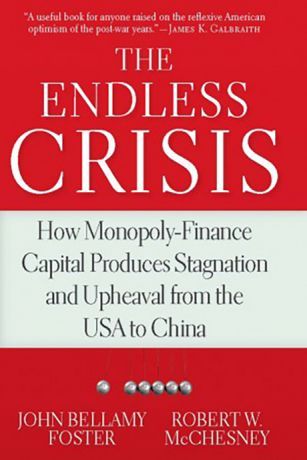Arts
You are here
Finance and the crisis of capitalism

July 2, 2014
For those of us in the International Socialists Tendency, we have been arguing since the economic crisis in 2007-2008 that the eruption in the system was the result of long-term tendencies within the capitalist mode of production for the rate of profit to decline.
Many other commentators have pointed to the specific financial dimension of the crisis and identified finance capital, credit and the many examples of “fictitious capital” (stock trading, investments in futures, derivatives, credit default swaps etc) as the major problem with the system and the reason for recent volatility and crises.
In The Endless Crisis, Foster and McChesney do a favour to those of us making the argument that there is a long-term crisis of profitability in the system by making a connection between the stagnation of the system and its turn to “financialization” as a remedy.
A stagnant economy dependent on financializaiton
Foster and McChesney draw on a great number of economists and statistics to support their claim that the US economy, as well as the economies of Japan and Europe, have been characterized by a “multi-decade stagnation” not just for the last two decades, but long-term trends can be seen since the 1970s. Foster and McChesney go on to argue that “it was this underlying stagnation tendency, which was the reason the economy became so dependent on financialization—or a decades-long series of ever-larger speculative bubbles.”
This analysis makes the case to those arguing that the problem is financialization and to those arguing it is the long-term tendency for capitalism to go into crisis—you’re both right! The system’s reliance on speculative bubbles (that invariably pop and lead to catastrophe of greater or lesser magnitude) have been key in the last decade to understanding how the system has sought to find profitability and expand, but this process must be understood within the system’s general decline in profitability and lack of places within the “real economy” to find areas of investment that yield a desired return. A perfect example of the turn to financialization is the fact that the financial wing of the General Motors’ corporation is far larger than the section of the company that still produces automobiles.
The main argument of the book is that monopolization, stagnation, financialization and globalization have produced a new historical phase, referred to by Foster and McChesney as “monopoly-finance capital.” What this amounts to is that, the Triad economies (the US, Europe and Japan—countries that we would consider wealthier and more developed globally) are locked in a stagnation-financialization brought on by over-accumulation.
Paradox of accumulation
This argument rests on the “paradox of accumulation.” Capitalism is characterized by an incessant drive to accumulate, but since profits grow by increasing the rate of exploitation of labour power (restraining wages and increasing productivity), this ultimately leads to limits on investment in consumption and production.
As the authors note: “In the mid-1970s the US economy slowed down drastically, ending a period of rapid expansion that had been fueled by: (1) the buildup of consumer liquidity during the war; (2) the second great wave of automobilization in the United States; (3) a period of cheap energy based on the massive exploitation of oil; (4) the rebuilding of the war-torn European and Japanese economies; (5) two regional wars in Asia, and Cold War military spending in general; and (6) a period of unrivaled US hegemony. As the external conditions lifting the economy during these years gradually waned, conditions of stagnation reemerged.”
The destruction of capital on a massive scale during World War II provided room for profitable investment in the real economy. This, combined with the external factors listed above, fueled the post-war boom. However, as investment in capital resources (plant, equipment, technology, innovation etc) began to outpace investment in living capital (the humans that use the technology and whose labour can be exploited for profit), the system began to stagnate. The result was a turn to finance capital as an avenue for profitable investment. So, amidst a general trend toward stagnation, “the so-called economic booms of the 1980s and ‘90s were powered by the rapid growth of financial speculation leveraged by increasing debt, primarily in the private sector.”
While impossible to summarize all the best parts of this book without stretching this review beyond its limits, all I can do is implore you to pick this book up and check it out. For those of us arguing that the crisis of capitalism is a long-term one and cannot be done away by getting rid of its most flagrant financial abuses, it reemphasizes those points in a new light and synthesizes varying points to create a stronger argument about the systemic role of capitalism in its latest financial crisis.
Section:
Topics:










